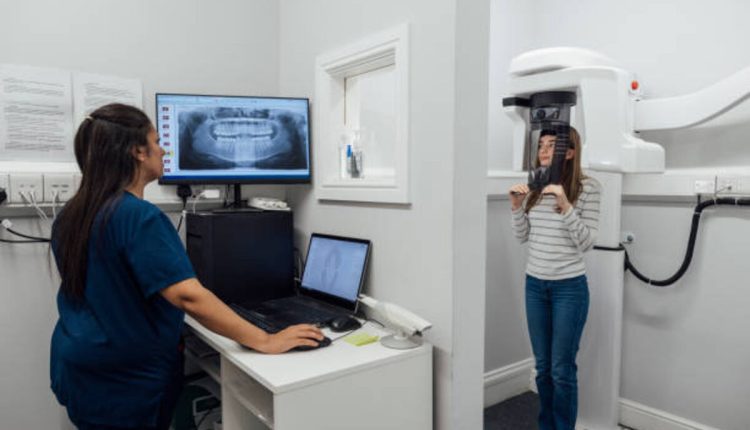Choosing an Autoclave for Sale
Autoclaves sterilize equipment and materials using heated steam under pressure. They are available in various sizes, from tabletop models to large walk-in units. Discover the best info about اتوکلاو دندانپزشکی.
Some autoclaves come equipped with biological indicators containing heat-resistant bacteria spores that will change color if sterilization conditions have been met, while others can directly transfer data on sterilization cycles to a facility’s computer system.
Cost
An autoclave is a piece of equipment that uses superheated steam to sterilize equipment placed within it, killing microorganisms, viruses, and spores at high temperature and pressure levels to produce sterile equipment. While its cost varies based on capacity, technology features, and capacity usage costs, its total cost of ownership (TCO) should also be factored into consideration over its lifespan, including utility consumption costs, maintenance, sterility assurance products, and training fees.
When purchasing an autoclave, select a manufacturer who understands your laboratory needs. They should be willing to sit down with you and discuss operations and sterilizer use in general, in addition to offering advice that could lower the autoclave’s TCO.
Autoclaves are complex pieces of equipment exposed to high levels of heat and pressure, so they may experience breakdowns over time. Addressing these issues may prove costly and disruptive to your lab; sometimes, the cumulative repairs could even exceed the initial purchase price!
Choose a manufacturer that provides turnkey installation by factory-trained service technicians from your region. This includes uncrating the sterilizer, installing it into place levelly, connecting utilities, and performing start-up and user training. Also, look for companies that can offer validation services, including IQ, OQ, and PQ validations.
Features
An autoclave, sterilizer, or steam digester is a laboratory equipment used to sterilize materials using high levels of pressure and temperature. They are often found in medical, food, glass, and aviation industries, as well as for tattooing, body piercing, veterinary science, and mycology applications. Furthermore, autoclaves play an integral part in curing building materials, vulcanizing rubber, creating fiber cement and aerated concrete products, or curing building materials in general.
Before initiating any cycle, an autoclave must first be prepared by clearing away air and lowering its temperature to reach its pre-programmed setting. Once this has taken place, steam flushes and pressure pulses are used to ensure that its chamber and jacket reach and maintain an ideal temperature level – when this has happened, it’s ready for loading and sterilization!
Selecting an autoclave equipped with the appropriate features is paramount for its safe and effective operation. Search for one with user-friendly controls, automatic alerts, fast cooling/drying times, FO control features, and dedicated cycle programs that make the machine safer to operate while reducing downtime and increasing quality work. It is also important to consider electric/water utility requirements – some sterilizing machines can operate using standard 120V outlets while others need a higher voltage that quickly heats steam more rapidly.
Safety
When searching for an autoclave to purchase, safety should always come first. A reliable manufacturer will regularly test their tanks to ensure they can withstand high pressures and temperatures. They should also conduct spore tests to ensure the autoclave effectively kills microorganisms. Finally, they should provide a release valve so you can release excess pressure, protecting both you and other equipment from potential danger.
Autoclave sterilizers have an array of uses across industries and applications. They are perfect for sterilizing medical devices like instruments and tools and liquids such as chemicals and reagents, curing composite materials or vulcanizing rubber, curing composites, or treating composite materials for cure purposes. Dental service providers and tattoo parlors alike utilize them to disinfect equipment before use.
There is an assortment of autoclaves on the market, from manual tabletop units and automatic sterilizers, to choose the one best suited to your needs. Start by considering what volume of items require daily sterilization as well as your workspace size – select a unit that will fit comfortably within this environment without becoming cumbersome for use; larger models take more time for loading/unloading, while smaller units offer quicker performance.
Maintenance
Autoclaves sterilize medical supplies and materials. They can also treat lumber for construction projects, cure composites, and vulcanize rubber by subjecting items to high heat and pressure for an extended period.
To keep an autoclave working smoothly, it must be regularly cleaned and maintained. Most manufacturers recommend conducting a comprehensive cleaning of the entire unit every month; in addition, they mandate checking of its pressure relief valve using a long screwdriver when the chamber has become cool to touch.
Regular maintenance will reduce costly repairs that could negatively impact patient care and keep costs to a minimum. Facility personnel should use self-service methods like visual checks, daily drain strainer cleaning, and weekly autoclave wipedowns, in addition to scheduling inspections by factory-trained and authorized technicians.
When shopping for an autoclave, it is crucial that you identify its size, configuration, and features that meet your specific requirements. Furthermore, take note of any ongoing costs such as energy and water consumption as well as maintenance or replacement parts costs. Remembering to select a reputable manufacturer is key to guaranteeing industry standards are met while getting excellent value for your money.


